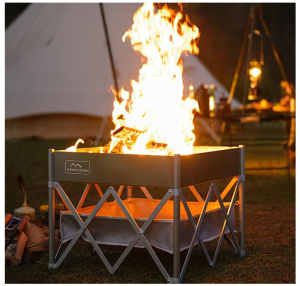
Wildlife Photography Tips for Beginners on Wildlife Adventure Trips

Wildlife trips are a window to the breathtaking world of wildlife photography, offering beginners a chance to immerse themselves in nature’s wonders through a camera’s lens. The proper guidance and insights can make all the difference for those just starting this thrilling journey. In this blog post, presented by Top Gull, we will delve into some essential photography tips for Wildlife adventure trips tailored to beginners. These tips will help you capture those awe-inspiring moments in the wild and ensure you have a memorable and responsible wildlife adventure.
Prepare Your Gear
Before you start your wildlife photography adventure, you must prepare your gear meticulously. However, start by thoroughly inspecting your camera and lenses, ensuring they are clean and in perfect working condition. Clean the camera’s sensor to avoid any unsightly specks on your images. Remember to carry spare batteries, as wildlife photography can be power-intensive, and having an extra memory card or two is necessary.
Understand Animal Behavior
To capture compelling wildlife photographs, it’s crucial to have a basic understanding of the animals you intend to photograph. Therefore, study their habits, habitats, and behavioral patterns. Are they nocturnal or diurnal creatures? Do they have specific feeding or mating routines? Knowing these details can help you anticipate their actions and movements, allowing you to be in the right place at the right time. Understanding animal behavior also contributes to ethical wildlife photography, as it helps minimize disruption to their natural lives.
The Right Location and Timing
Selecting the right location and timing are pivotal in wildlife photography. Research the best wildlife hotspots that align with your interests. Different regions and ecosystems offer unique opportunities for capturing various species. Consider planning your wildlife adventure during the golden hours of photography—early morning and late afternoon. These times provide soft, warm, and magical lighting that can transform your wildlife photographs into stunning works of art. Ensure you’re at your chosen location well before the magic unfolds; patience is a virtue in wildlife photography.
Patience is Key
Wildlife photography often tests your patience. Animals don’t follow scripts and may only sometimes appear when you want them to. Be prepared to wait for the perfect shot. Sometimes, hours may pass with no action, and suddenly, an incredible moment can unfold. Use this downtime to appreciate the natural world and be ready with your camera when the moment arrives. Patience is a virtue in wildlife photography, and it often rewards you with extraordinary shots that tell a story.
Keep a Safe Distance
On wildlife adventure trips, respecting wildlife and their habitats is paramount. When photographing animals, it’s essential to maintain a safe and respectful distance. Using long lenses can help you capture close-up shots without getting too close and disturbing the animals. Not only is this approach safer for you, but it also ensures that your presence doesn’t stress or disrupt the wildlife. Ethical wildlife photography results in more authentic and undisturbed images and protects the welfare of the animals and their ecosystems.
Focus on Composition
Effective composition is the backbone of outstanding wildlife photography. Use photography techniques like the rule of thirds, leading lines, and framing to create visually appealing and balanced shots. Experiment with different angles and perspectives to add depth and interest to your photographs. Please pay attention to the background, ensuring it doesn’t distract from your subject. In addition, applying these composition principles lets you transform a simple wildlife sighting into a captivating and well-composed image.
Use Continuous Shooting Mode
Animals can be unpredictable, and a single click may not capture the entire story. Thus, use the continuous shooting mode on your camera to increase your chances of getting the perfect shot. This setting allows you to take a rapid series of photographs with a single shutter button press. It’s beneficial when animals are in motion or when you’re attempting to capture fast and fleeting moments. Sorting through the burst of images later ensures you get that perfect frame that encapsulates the moment’s essence.
Conclusion:
Wildlife photography is a thrilling and rewarding pursuit, especially for beginners on wildlife adventure trips. By preparing your gear, understanding animal behavior, choosing the right location and timing, practicing patience, maintaining a safe distance, focusing on composition, using continuous shooting mode, and enhancing your post-processing skills, you can embark on a journey filled with unforgettable moments and captivating images. To summarize, with guidance from Top Gull, your wildlife photography adventure promises to be an artistic endeavor and an ethical and responsible exploration of the natural world. So, grab your camera, head into the wild, and let the magic of wildlife photography unfold before your lens.
Recent Posts




Heat up your outdoor gatherings with our wood burning fire pit with heat shield


Wildlife Photography Tips for Beginners on Wildlife Adventure Trips
Recent Posts




Heat up your outdoor gatherings with our wood burning fire pit with heat shield






Heat up your outdoor gatherings with our wood burning fire pit with heat shield



